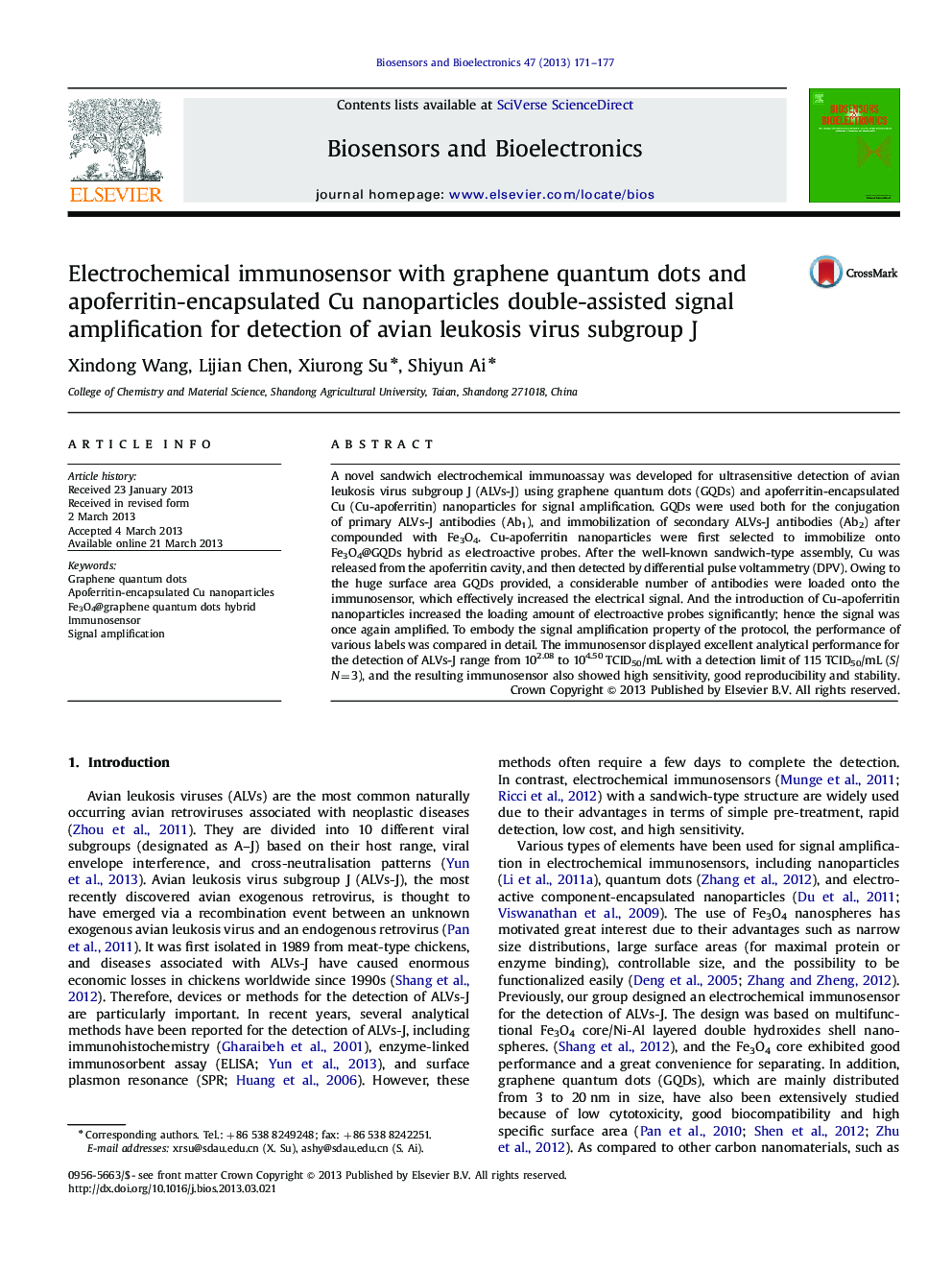| Article ID | Journal | Published Year | Pages | File Type |
|---|---|---|---|---|
| 866956 | Biosensors and Bioelectronics | 2013 | 7 Pages |
•Ultrasensitive immunoassay of avian leukosis virus subgroup J was achieved.•Graphene quantum dots were used for the conjugation of antibodies.•Apoferritin-encapsulated Cu nanoparticles were selected as electroactive probes.•The strategy provides a great promise in clinical application.
A novel sandwich electrochemical immunoassay was developed for ultrasensitive detection of avian leukosis virus subgroup J (ALVs-J) using graphene quantum dots (GQDs) and apoferritin-encapsulated Cu (Cu-apoferritin) nanoparticles for signal amplification. GQDs were used both for the conjugation of primary ALVs-J antibodies (Ab1), and immobilization of secondary ALVs-J antibodies (Ab2) after compounded with Fe3O4. Cu-apoferritin nanoparticles were first selected to immobilize onto Fe3O4@GQDs hybrid as electroactive probes. After the well-known sandwich-type assembly, Cu was released from the apoferritin cavity, and then detected by differential pulse voltammetry (DPV). Owing to the huge surface area GQDs provided, a considerable number of antibodies were loaded onto the immunosensor, which effectively increased the electrical signal. And the introduction of Cu-apoferritin nanoparticles increased the loading amount of electroactive probes significantly; hence the signal was once again amplified. To embody the signal amplification property of the protocol, the performance of various labels was compared in detail. The immunosensor displayed excellent analytical performance for the detection of ALVs-J range from 102.08 to 104.50 TCID50/mL with a detection limit of 115 TCID50/mL (S/N=3), and the resulting immunosensor also showed high sensitivity, good reproducibility and stability.
